17 Totally Crazy Twins Facts That Will Blow Your Mind

Twins can seem like an ongoing party trick—something magical taking place under ordinary circumstances. Who among us hasn’t been fascinated by the connection between a pair of twins, especially their ability to communicate without saying a word? And you’d be hard-pressed to find a person who isn’t guilty of accidentally mixing up siblings in an identical twin set. Even as an identical twin myself, I’m often mystified by multiples for the same reasons everyone else is. To explain some of the wonder of seeing double, here are 17 crazy twin facts to help you understand and appreciate us lookalikes.
1
Dogs can tell the difference between identical twins.

While twins may confuse us humans, canines can sniff out their differences. In a 2011 study published in the journal PLOS One, German shepherd police dogs were presented with the scents of identical twins. Then, they were then able to find the exact matches among jars that contained scents from other people that were meant to distract them. Though the dogs were already trained to track down individual scents, according to the report, they were able to pick out twins “even if they live in the same household and eat the same food,” two things that make up our own personal perfumes.
2
Twins are more likely to be left-handed.

The handedness of twins has long been studied and debated, but the general consensus is that while about 10 percent of the general population is left-handed, that number is higher among twins. For example, in one 2009 study published in the journal Neuropsychologia of 30,161 Finnish subjects between the ages of 18 and 69, left-handedness was more common in twins (8.1 percent) than in triplets (7.1 percent) and single borns (5.8 percent).
3
There is such a thing as “semi-identical” twins.

There are two types of twins that everyone knows: identical, which are monozygotic, and fraternal, which are dizygotic. Those scientific names refer to the number of zygotes involved: For identical twins, a single fertilized egg is split into two halves; for fraternal twins, two eggs are fertilized. But what about sesquizygotic?
Monozygotic twins share 100 percent of their genomes, dizygotic 50 percent, and sesquizygotic share some percentage in the middle. Though rare, these sesquizygotic twins are the result of two sperm fertilizing a single egg, then the egg splits—so they have 100 percent match of their mother’s genes and some odd percentage match of their father’s. It’s like fraternal-identical twins. A detailed case study of the anomaly was published in 2019 in The New England Journal of Medicine.
4
Some identical twins are “mirror twins.”

About 25 percent of identical twins are mirror images of one another, according a 2012 article in Scientific American. This means that some of their physical traits are equal but opposite: One may have a birthmark or freckles on the right side of their face, while the other has the same on their left side. One may be left-handed, the other right. One may have curls around their right ear, the other around their left.
There isn’t deep science to explain the phenomenon, because not all traits are mirrored, but there are so many cases, it’s hard to ignore. The Washington State Twin Registry suggests that mirror twins can traced back to the splitting of the fertilized egg in the womb: When the egg is split, it may already have a clear left and right side, leading to mirroring.
5
Africa has the highest rate of twins.
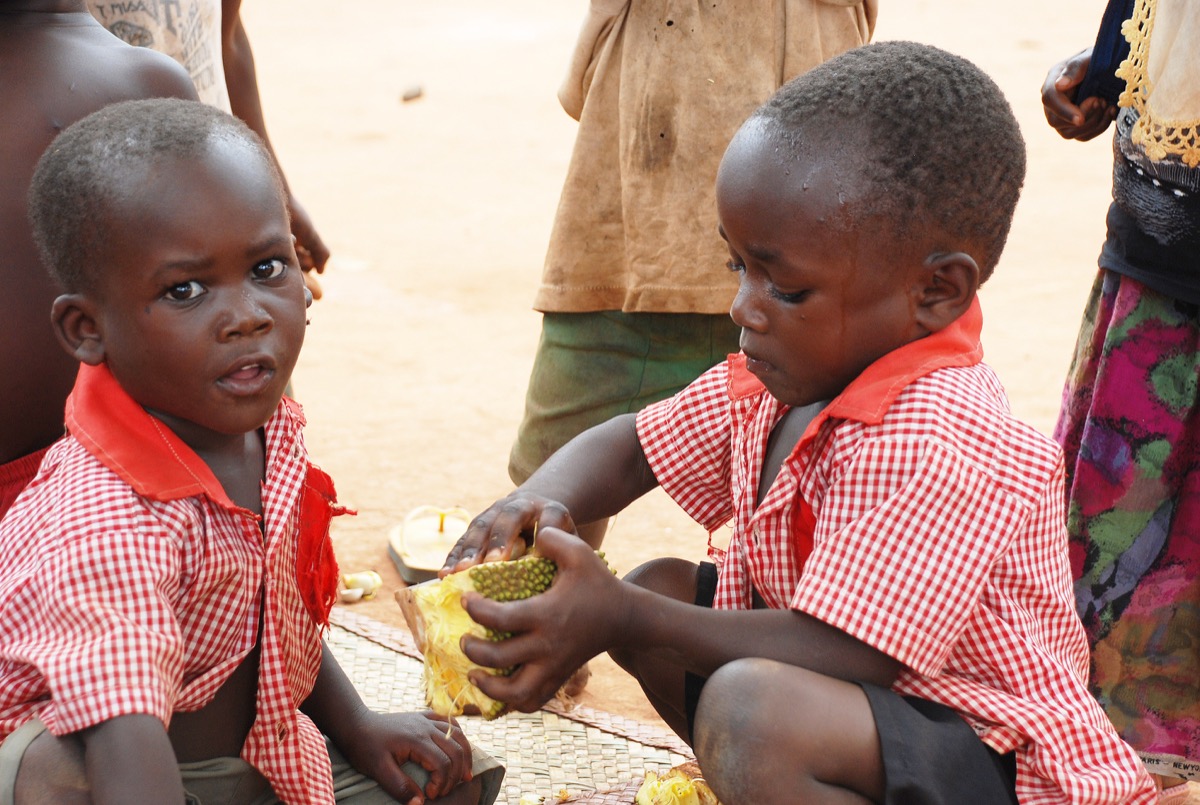
There is a higher incidence of twins across Central Africa than any other area in the world, according to research published in 2011 in PLOS One. While the international rate of twin birth is 13.1 per 1,000 births, the average across the middle of Africa jumps to over 18 per 1,000.
The town of Igbo-Ora, Nigeria, was long considered to be the city with the highest rate of twins, with the BBC citing as many as 45 to 50 twins for every 1,000 births there in the years between 1972 and 1982. In the more recent PLOS One study, the title of most twins in Africa goes to a small country called The Republic of Benin, which sees 27.9 twins per 1,000 births!
6
Twins who grow up apart are still likely to have similar personalities, interests, and attitudes.

Nature sometimes trumps nurture. In a landmark 1990 study published in the journal Science, researchers studied more than 100 sets of twins who grew up apart. The results showed that even though they weren’t raised together, they still shared many personality traits, temperaments, and personal and professional interests. The researchers concluded that “monozygotic twins reared apart are about as similar as monozygotic twins reared together.”
7
Twins socialize in the womb.

If you’ve ever been in close quarters with someone, you’ve probably gotten to talking. So imagine what it’s like to be trapped in a tiny space with someone for nine months! In a 2010 study published in PLOS one, researchers used ultrasound technology to monitor five sets of twins during pregnancy. Over the course of their research, it became clear that the twins were physically contacting their wombmates more and more. Between weeks 14 and 18 of gestation, more of their movements were directed at their co-twin.
8
And they speak their own language.
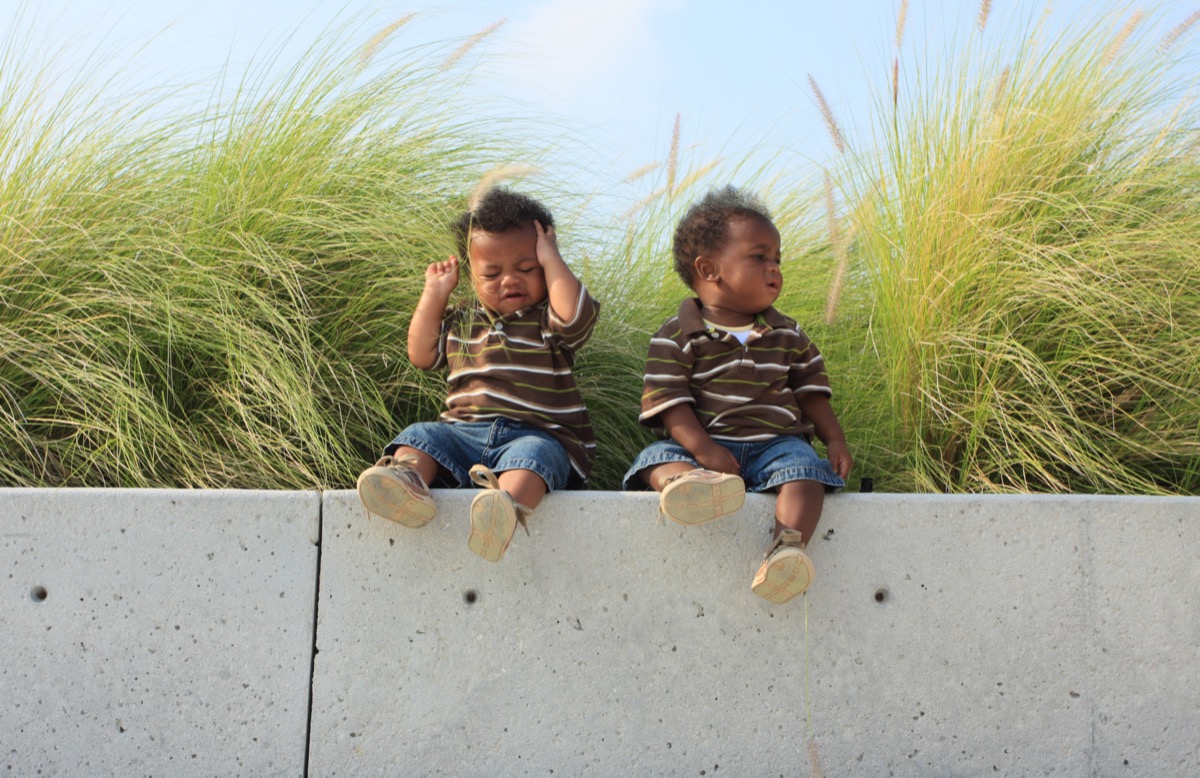
Twins often develop language later than single-born individuals. In a 2014 study published in the Journal of Speech, Language, and Hearing Research, researchers studied 473 pairs of twins to better understand how they used language when they were younger than 24 months. “The ‘twinning effect’—a lower level of language performance for twins than single-born children—was expected to be comparable for both kinds of twins, but was greater for identical twins,” Mabel L. Rice, PhD, the lead researcher of the report, said in a statement. One reason may be that 40 percent of twins have an “autonomous language” that only they understand.
9
There is an annual twins-only gathering in Twinsburg, Ohio.

At the end of every summer since 1976, twins and multiples have descended on Twinsburg, Ohio, for the annual Twins Days Festival. In 2019, amid socializing, there was a twins volleyball tournament, a “Double Take Parade,” a twins talent show, and “twingo,” which is—you guessed it—bingo for twins. There were also awards given to twins who were the most alike across ages and genders—and there were even a few awards for twins who were the least alike!
Over the years, 77,000 sets of twins have found themselves in Twinsburg for the annual festival. And although you must be a twin to attend, the event has been well-documented for all to enjoy.
10
Mothers of twins live longer.

In a vast 2011 study, researchers looked through the Utah Population Database and pulled information on mothers from 1807 to 1899. There was a total of 4,603 mothers with twins and 54,183 with single babies. The results were published in the Proceedings of the Royal Society B and showed that mothers of twins exhibited “lower postmenopausal mortality… and higher lifetime fertility than their singleton-only bearing counterparts.”
11
Taller women are more likely to have twins.
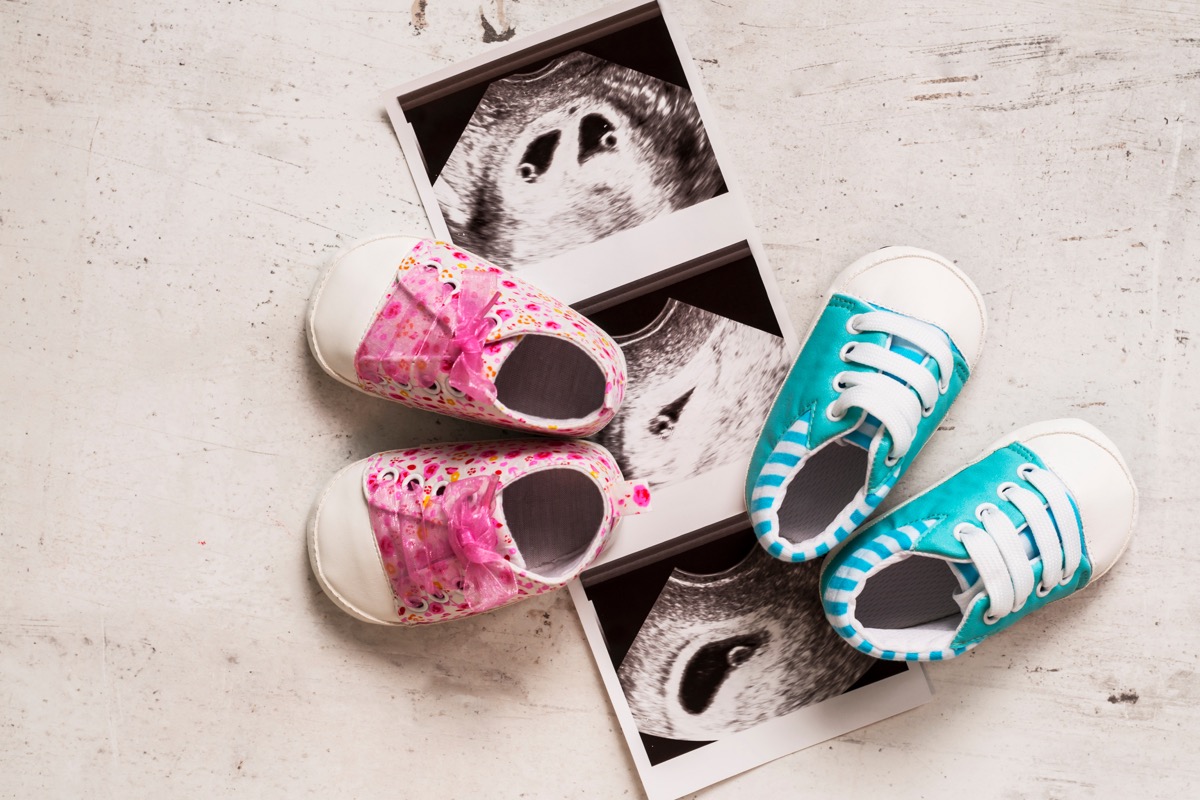
Among the many unique factors that may lead to a woman having twins is height. Yes, women who are taller than average are more likely to give birth to multiples. In a 2006 study published in the Journal of Reproductive Medicine, Gary Steinman, MD, PhD, a physician at Long Island Jewish Medical Center in New Hyde Park, New York, wrote that he studied 129 women who had twins or triplets. He found the average height of mothers of multiples to be 5’5”, which is more than an inch taller than the national average of 5’3.75”. Steinman hypothesized that a protein that is more frequently found in taller people— insulin-like growth factor, or IGF—may stimulate the ovaries and help multiple embryos survive.
12
And eating dairy may boost the possibility of twins.

If you aren’t taller than the national average but still want twins, consider upping your intake of dairy products. In another 2006 study, Steinman found that if women change their diets, they may also change the likelihood that they will have twins or triplets. The reason is again IGF, which reacts to animal products, including dairy. Steinman found that women who ate animal products were five times more likely to have twins than women who were vegan.
13
Fraternal twins come from the mother’s genes.

A father’s genes don’t seem to play a part in producing fraternal twins, according to researchers at Queensland Institute of Medical Research in Brisbane, Australia, which specializes in twin studies. In fact, the likelihood of fraternal twins comes completely from a mother’s genes. In 2002, Queensland Institute researchers Nick Martin and Grant Montgomery said in a statement that “the best way of increasing your chances of having fraternal twins if you are female is to have a mother, a sister, or an aunt (on either your mother’s or father’s side) who has had fraternal twins.” According to their findings, the tendency for women to have multiple ovulation, where two or more eggs are released in a single menstrual cycle, is the primary cause of increasing the likelihood of having twins.
But there are other factors, according to Martin and Montgomery, including the age of the mother; women are more likely to have twins in geriatric pregnancies than when they are younger.
14
Twin birth rates in the U.S. were on the rise for 30 years, but started dropping in the last five.
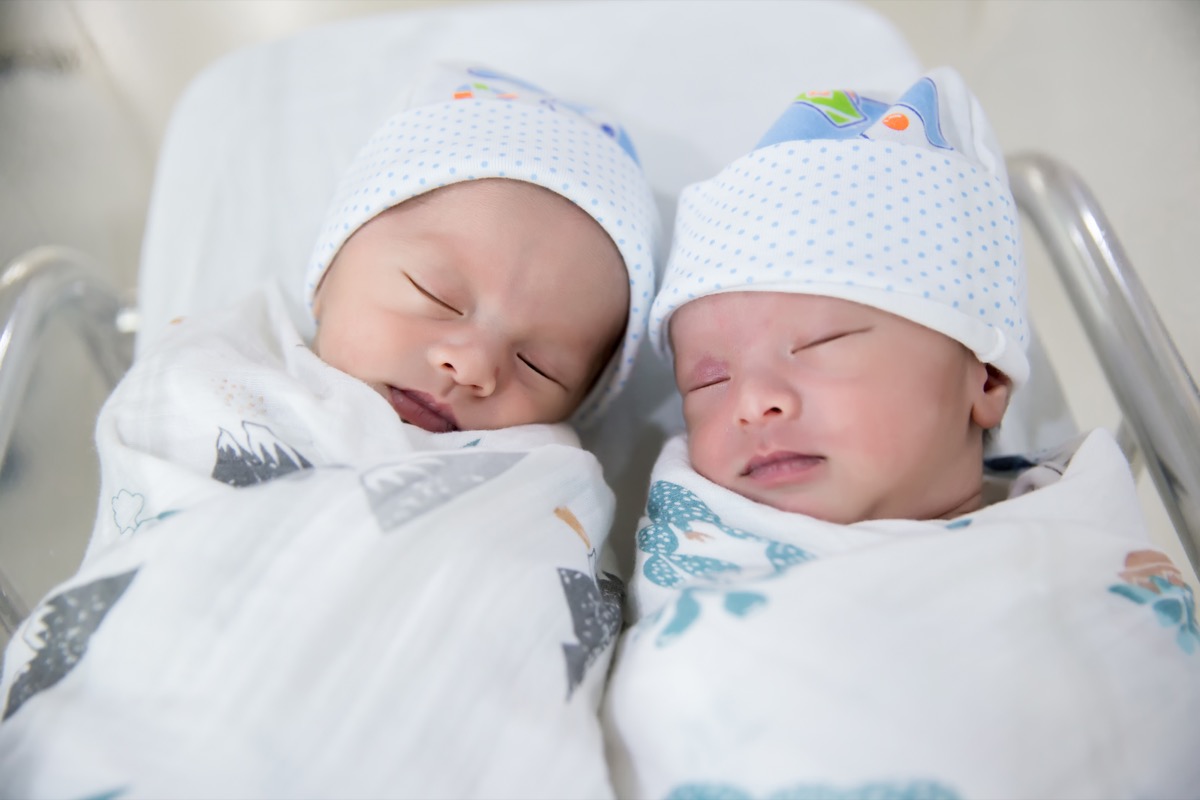
In 1980, the rate of twin births in the U.S. was 18.9 per 1,000 births. That rate grew by leaps and bounds until 2014, when twins represented 33.9 out of 1,000 births, according to the National Center for Health Statistics, which tracks birthrates. However, we’ve since experienced a steady decline in the last five years, with twins accounting for 32.6 out of 1,000 births in 2018.
What caused the numbers to essentially double before they started dropping? “Changes to fertility enhancement therapies are definitely part of the equation,” Joyce A. Martin, MPH, statistician with the National Center for Health Statistics, said in a statement. With advances made to in vitro fertilization (IVF) over the years, doctors were able to improve the quality of embryos they were transferring to women, thus increasing their odds of getting pregnant without using treatments that carry high risk of multiple pregnancy.
15
Stanford University has its own twin registry.

Who keeps track of all these twins? Some countries keep registries of all twin births, as do various institutions. In the U.S., the National Center for Health Statistics tracks the occurrence of twins over the years, but it doesn’t note their names. And Stanford University has its own Twin Registry, where multiples can volunteer and join a community that is often considered for research studies. Likewise, the Mid-Atlantic Twin Registry provides resources to families with twins and also researchers. Internationally, twins can join similar groups in China, Italy, the U.K., and many other countries.
16
Identical twins are responsible for tons of scientific advancements.
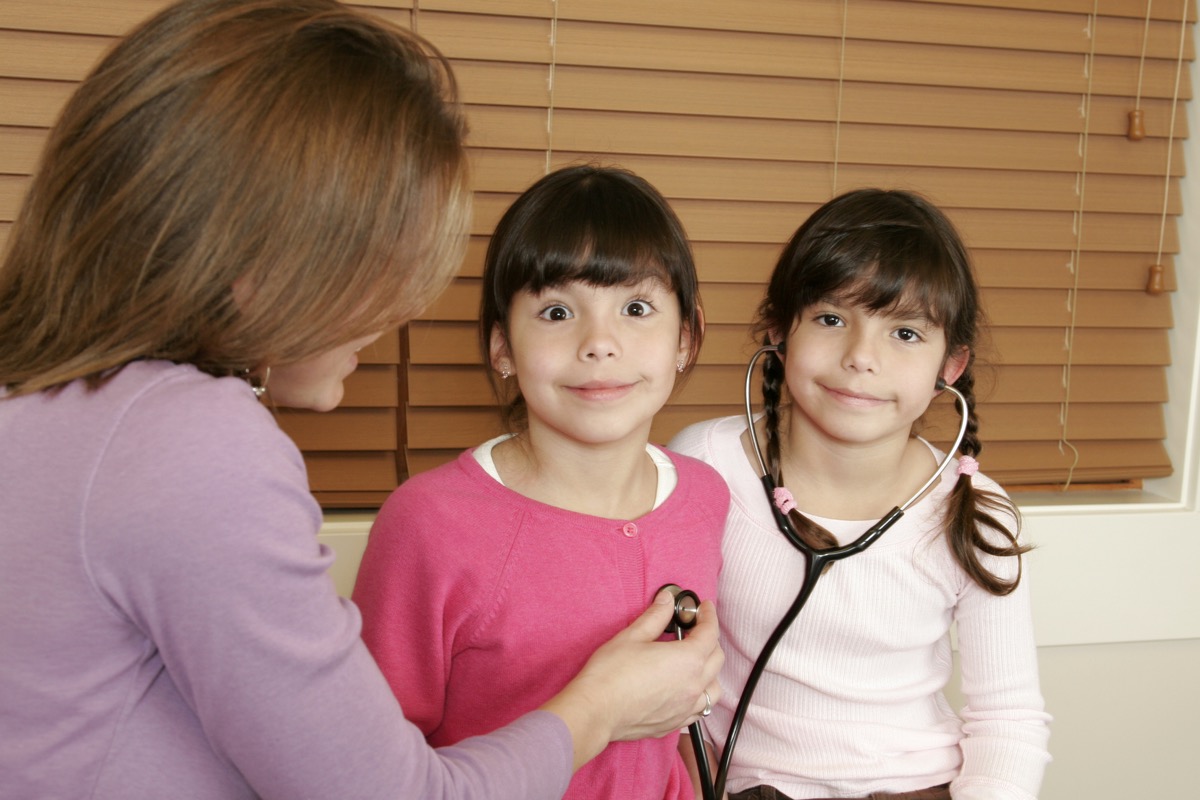
The basis for much scientific discovery is a control group and a test group—and who makes a better match for those groups than individuals who share so many attributes? Identical twins have participated in studies that test psoriasis and psoriatic arthritis, breast cancer, and cognitive development, among many others.
TwinsUK has been studying twins since 1992 and has reviewed 14,000 twins. Tim Spector, the program’s director, put it this way in a statement: “Twins are the perfect experiment.”
17
One identical twin was even sent to space for a year for the sake of science!

When NASA wanted to better understand the effects of long-term space travel on the human body, they were lucky enough to have a pair of identical twin astronauts on hand. Scott Kelly and Mark Kelly, who had both already been to space, were part of a 340-day study during which Scott lived on an international space station while Mark lived the terrestrial life on Earth. The results, published in 2019 in the journal Science, found that Scott had some significant changes to his body after spending nearly a year in space, some of which extended for months after his return.